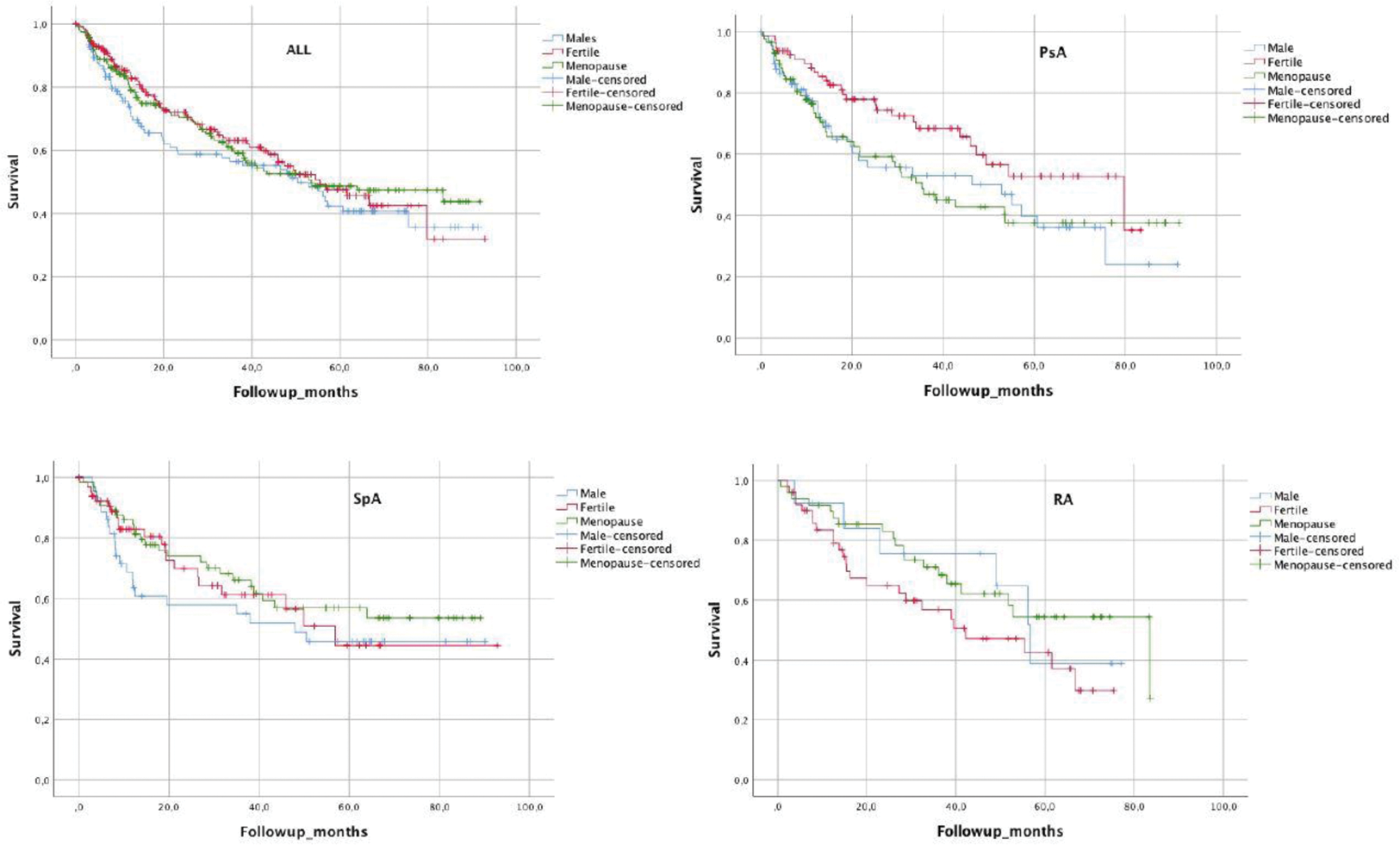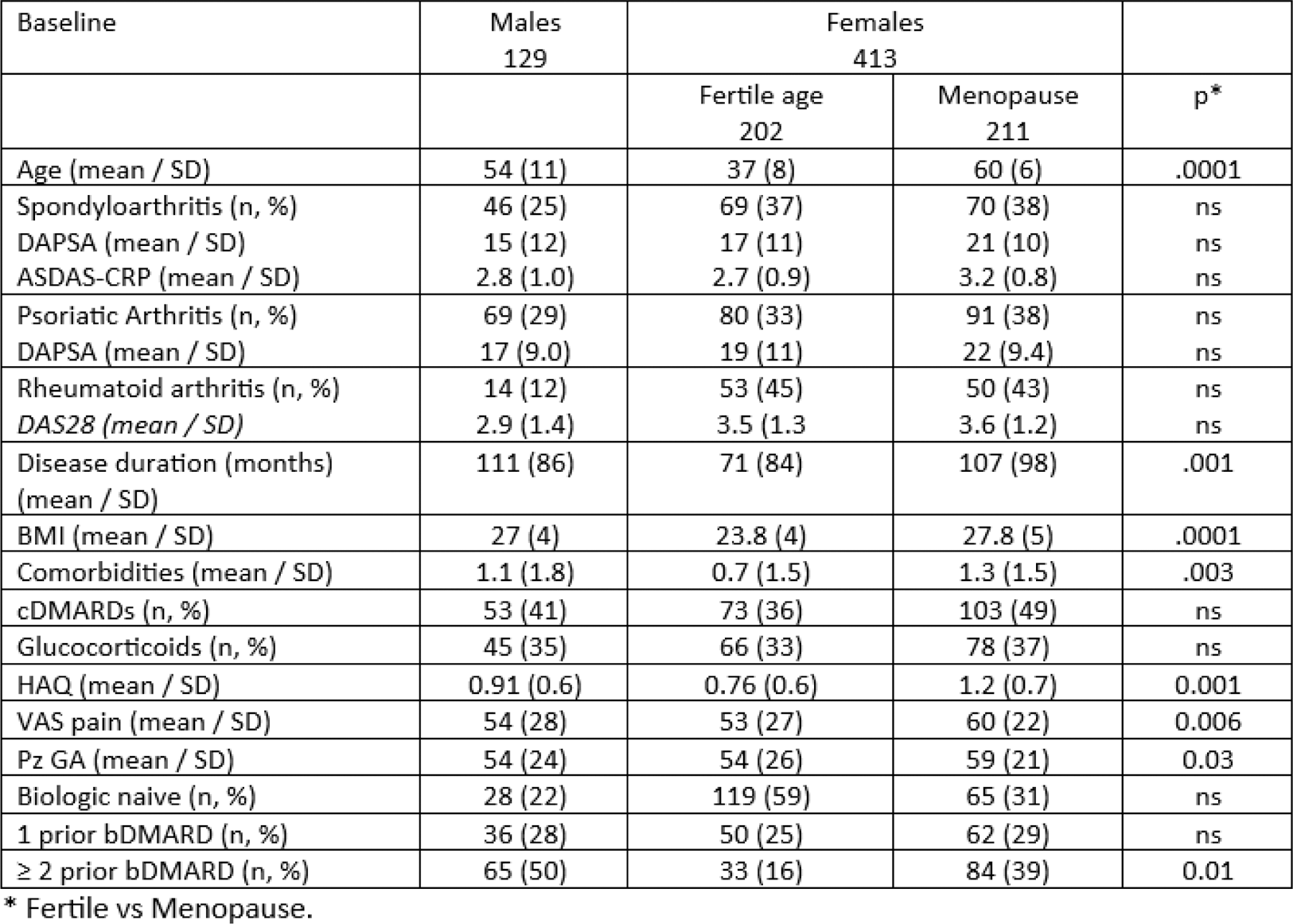

Background: There is emerging evidence that chronic arthritis, namely psoriatic arthritis (PsA), spondylarthritis (SpA) and rheumatoid arthritis (RA) have a different disease course upon sex difference, but whether hormonal status may impact on drug effectiveness has been scarcely investigated.
Objectives: To compare the effectiveness of certolizumab on clinical outcomes in female patients with PsA, SpA, and RA starting the therapy during fertility or menopause age.
Methods: We analyzed the charts of patients affected with PsA, SpA, and RA from the Apulian BIOPURE registry starting a treatment with certolizumab from January 2016 to May 2023. Female patients were divided upon their hormonal status. A cohort of male patients was analyzed as reference cohort. Descriptive statistics (mean, SD, or percentages) were performed for demographic (age, BMI, comorbidities) and disease related characteristics (disease duration, DAS28, DAPSA, ASDAS-CRP, HAQ, VAS-pain, Pts-GA, glucocorticoids, cDMARDs) at baseline, 12 months and at last observation. Drug survival was evaluated by Kaplan-Meier life table analysis, and differences were tested with the log-rank test. Estimates hazard ratios (HRs, 95% confidence intervals (CI)) of drug discontinuation adjusted for patient’s demographics, disease characteristics, hormonal status, and prior biologic treatments were computed by multivariate regression models. The achievement of low disease activity (LDA) was assessed at 12 months and the difference between fertile and menopausal females was compared by chi-square test.
Results: We recruited n.542 patients starting certolizumab in the time frame of the study, of whom n. 240 had PsA, n. 185 SpA, and 117 were diagnosed with RA. Of n.413 females, n.202 were on fertile age and n. 211 on menopause at beginning of treatment with certolizumab. N.129 were males. Baseline demographic and clinical characteristics, and the comparison between fertile and menopausal age are shown on detail in Table 1. No significant difference of drug survival rates was observed between female on fertile age (63%, median 55.4 months) and those on menopause (57%, median 53.5 months). No difference in terms of drug persistence was also found within each disease (Figure 1). At 12 months, LDA based on DAS28 was achieved in 86% of fertile and 59% of menopausal female (p<0.0001); while DAPSA based LDA was obtained 85% of fertile and 69% of menopausal female (p<0.002). Logistic multiple regression analysis showed that the only baseline covariates associated to drug discontinuation were the lack of glucocorticoid (negative predictor OR 0.60, 95 % CI 0.39-0.91) and biologic-naïve patients (negative predictor OR 0.57, 95 % CI 0.34-0.96), while the fertility/menopause age did not.
Conclusion: In real-life settings, the hormonal status does not affect the drug persistence of certolizumab in female with chronic arthritis, although 12 months LDA was achieved more frequently in females in fertile age.

Table 1.

REFERENCES: NIL.
Acknowledgements: NIL.
Disclosure of Interests: None declared.